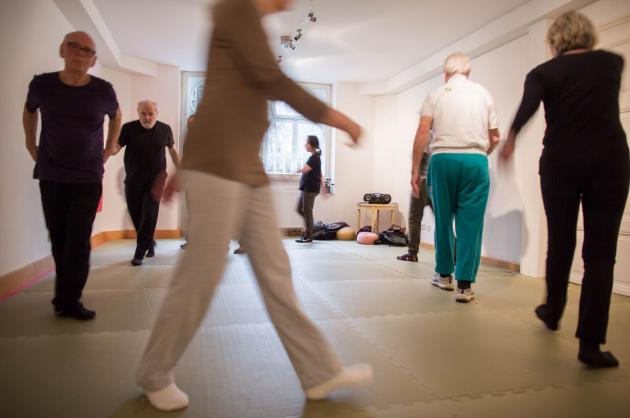Frozen in their tracks

How simple movement therapies can fight one of the strangest symptoms of Parkinson's disease
A bizarre symptom of Parkinson’s Disease that makes people suddenly stop in their tracks is finally getting treatment.
Freezing, which can occur from one second to the next, is a temporary, involuntary, inability to move.
A place in your path that abruptly narrows, such as a doorway, can be the trigger. Changes of direction or even a light changing to green can set it off.
“Sufferers find it very upsetting,” says Brigitte Kaempf, co-founder of a Parkinson’s patients’ association in Germany, Evanda. “Some no longer have the confidence left to go out of the house because of it.”
But even in the home, a freezing episode can occur, for example just when you are trying to reach a ringing phone.
Sixty to 80 per cent of Parkinson’s patients suffer from the problem, says Andres Ceballos-Baumann, chief physician at the Schoen Clinic in Munich, a speciality clinic for the disease.
“This restricts not only their mobility and independence but also increases the risk of falling and getting injured,” he says.
What causes freezing is still unknown.
Stiff muscles, trembling hands, involuntary movements and increasing immobility are typical symptoms of Parkinson’s Disease. No cure has been found yet.
The disease was first described by British physician James Parkinson in 1817. It sees the destruction of nerve cells that produce dopamine, a neurotransmitter that helps nerve cells communicate with each other. Without it, signals between the brain and muscles falter.
Sufferers are given dopamine substitutes, but typically these only work for a limited time. That’s often the time when freezing starts.
“Many patients experience it for the first time when the dopamine replacement therapy no longer works so well,” says Ceballos-Baumann.
Other drugs can sometimes help, but simple therapies aimed at dealing with freezing episodes offer more promise.
They have not only the effect of developing strategies so that patients can get out of freezing situations, but also mean that freezing occurs less often and is less stressful, according to Ceballos-Baumann who has developed “anti-freezing” training with his team in Munich.
First, the team analyses what triggers freezing in each patient, then those scenarios are practised, at first in the clinic and then at home. “Constant repetition and practice is important to maintain the effect,” says Ceballos-Baumann.
At another specialist Parkinson’s clinic in Germany, in Beelitz-Heilstaetten in Brandenburg, marching music is employed.
“We analyse the gait and develop individually tailored workout music. Walking rhythm and speed are transmitted via the music. The aim of the training is to make walking rhythmic and safer,” says music therapist Stefan Mainka.
Surprisingly, a simple signal can often end freezing: a metronome can unfreeze a sufferer, for example.
Using a mobile laser device that creates a line in front of the patient to step over is another common solution.
Sometimes a more difficult movement than the one planned before the freeze-up can end the blockade.
“That is the paradox of freezing,” says the chief physician at the Parkinson’s clinic in Beelitz-Heilstaetten, Georg Ebersbach.
Ebersbach is on the executive board of the German Parkinson’s Society. He says freezing is hard for non-sufferers to understand: “A patient can easily walk down a corridor and then suddenly can’t go through a door.”
Attempting to push or pull the person is not the proper solution, self-help group member Kaempf says. She has lived with the disease for 15 years. “On the contrary, stress and anxiety will only make things worse,” she says.
Instead, relatives need to be taught about the anti-freezing strategies too, so that they can practise them – “and then proceed step by step.”
RELATED





